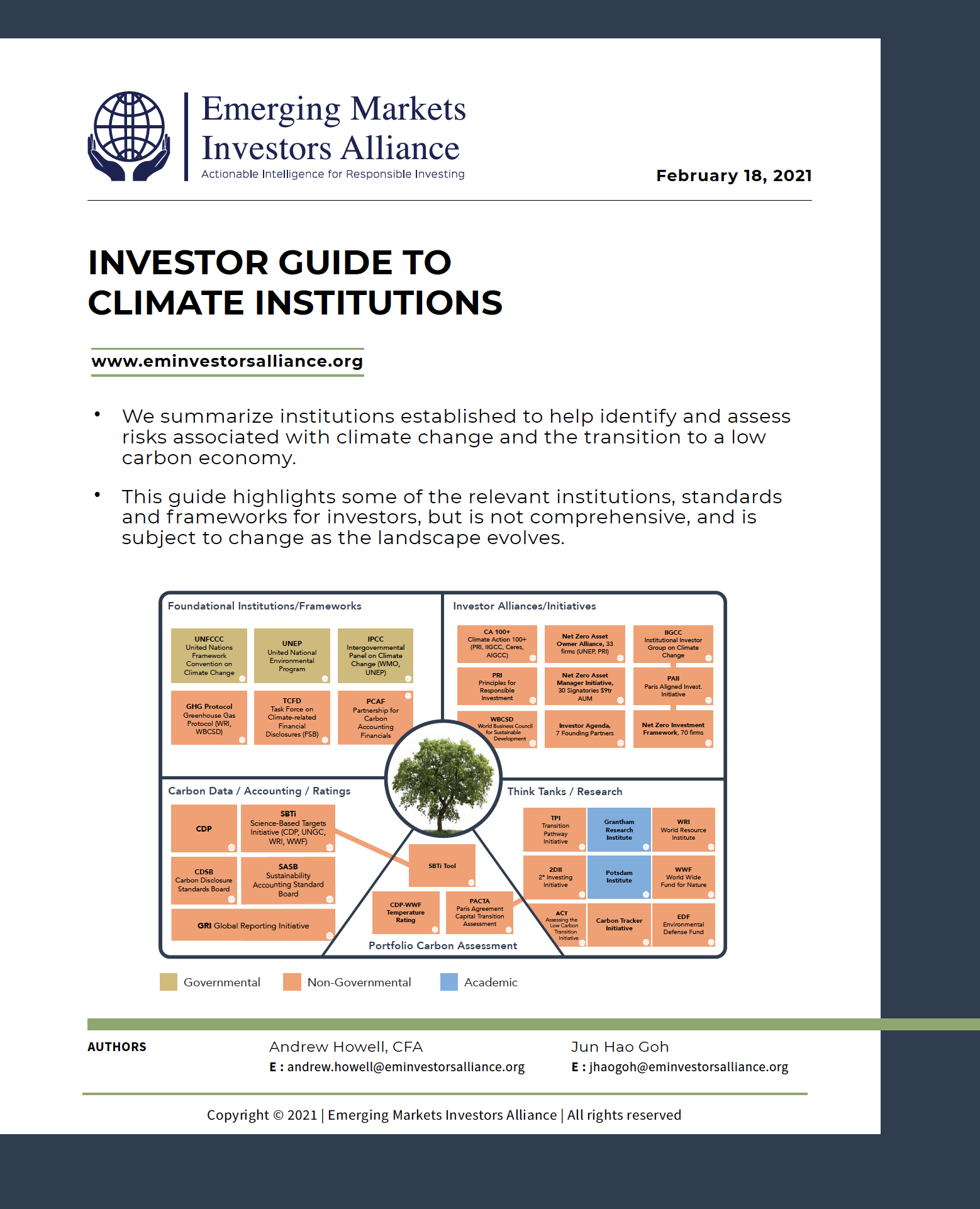-
We summarize institutions established to help identify and assess risks associated with climate change and the transition to a low carbon economy.
-
This guide highlights some of the relevant institutions, standards and frameworks for investors, but is not comprehensive, and is subject to change as the landscape evolves.
Climate change has emerged as one of the most critical risks facing investors. Although historically many investors in emerging markets (EM) have not focused on this issue, climate risk is arguably more important in EM, where the transition to a low carbon economy consistent with the goals of the Paris Agreement is likely to present major challenges. Likewise, as we discussed in a recent report, many EMs are both highly exposed to physical climate risks and, in many cases, less prepared for these effects.
Investors looking to assess climate risk have the benefit of a wide range of global institutions that have emerged in recent decades to assist governments, companies, investors and citizens in grappling with issues around climate change.
However this institutional landscape is complex and evolving, and can be difficult to make sense of. A glance through our guide, for example, reveals two major but unrelated initiatives, each using the term “net zero”: the Net Zero Asset Owners Alliance and the Net Zero Asset Managers Initiative, as well as a “Net Zero Investment Framework” launched by the the Institutional Investors Group on Climate Change (IIGCC), the major European investor initiative focused on climate. And by the way, the IIGCC should not be confused with another body, the Investor Group on Climate Change (IGCC), an organization in Australian and New Zealand. Former Bank of England governor and climate policy luminary Mark Carney has summarized this state of complexity by noting nearly 400 climate initiatives, creating a risk, as he put it, “of getting lost in the right direction”.
While this guide cannot fully tame the wilds of the climate world, we hope it provides a helpful first stop for investors by highlighting some of the more relevant institutions, standards and frameworks. This mapping is far from being comprehensive, and is subject to change as the landscape evolves further.
To access the entire report readers will need to become Alliance members. Please click here to request membership information.


